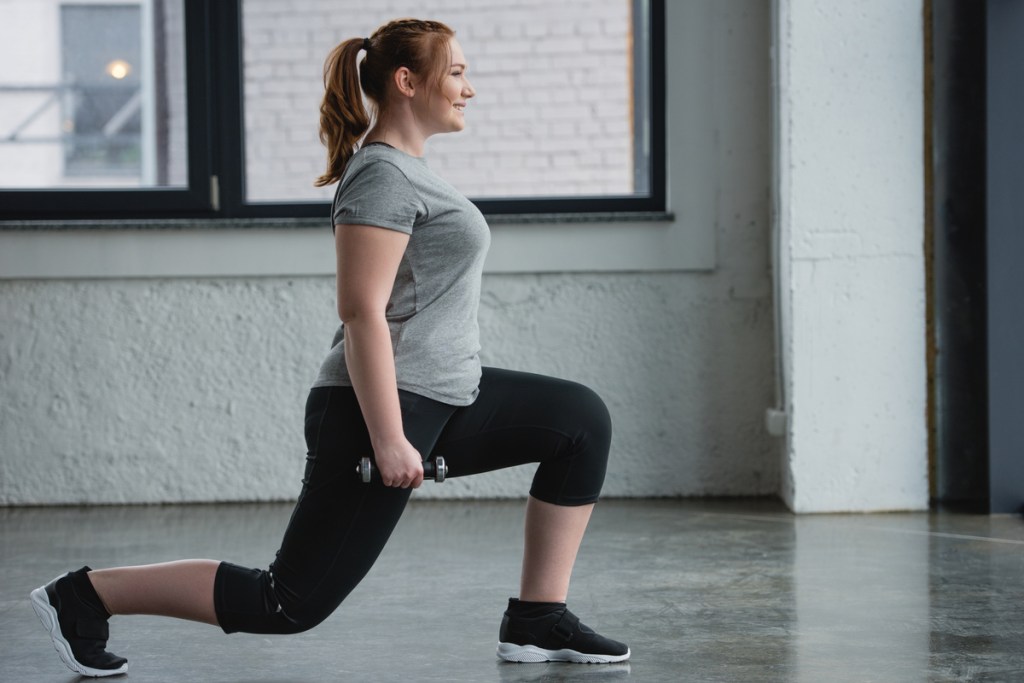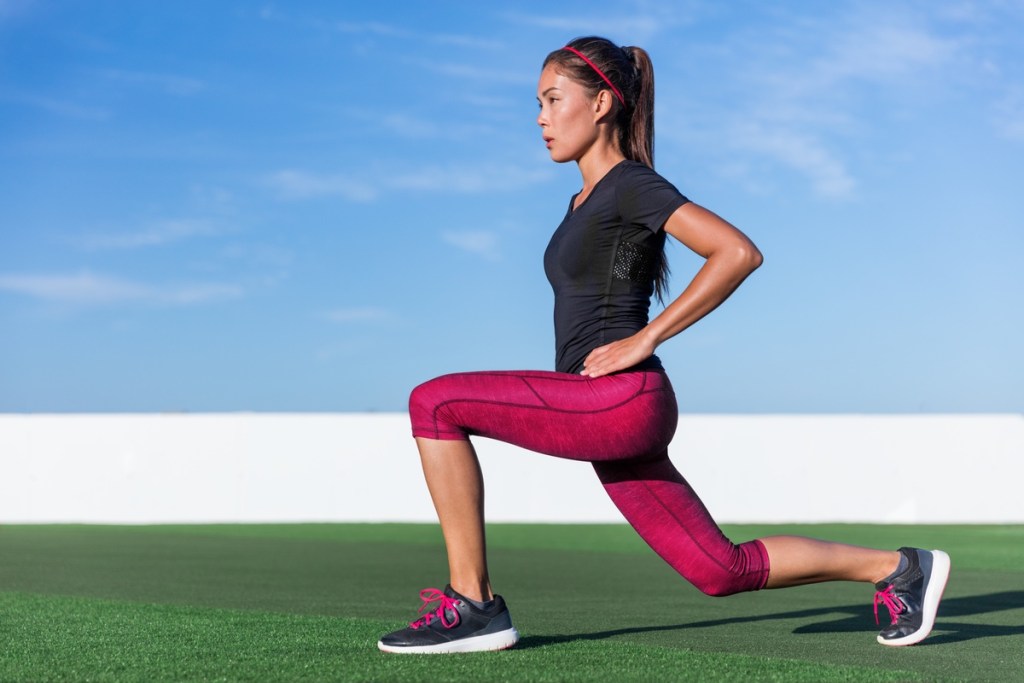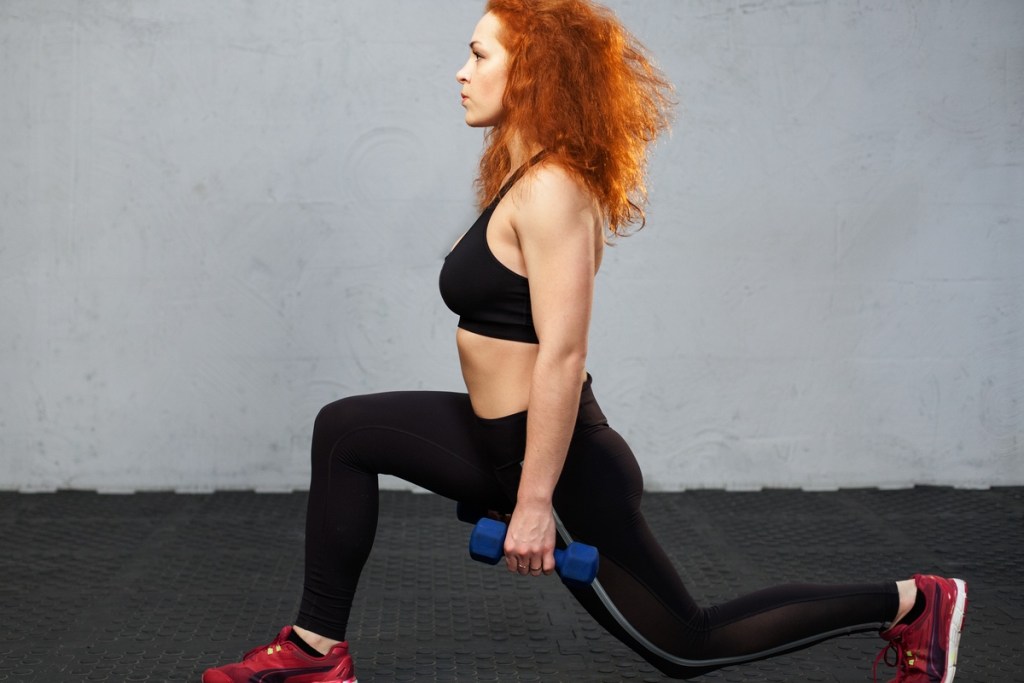
Walking lunges are one in a group of exercises known as plyometrics. Generally speaking, these exercises are defined as quick-burst movements designed to help increase speed and strength.
Brought back into prominence by fitness trends like CrossFit, some of the more popular plyometric exercises include:
– Push-ups
– Box jumps
– Burpees
– Squat jumps
– Power skipping
The walking lunge is another example of plyometrics and one that provides a variety of fitness benefits. Here we’ll take a close look at how to properly execute a walking lunge, as well as identify common problems or risks in the technique that can reduce the effectiveness of the exercise or even increase the chances of injuries.

How to do a walking lunge
First, the basics. The walking lunge is a variation on the traditional lunge. In the traditional version, you step or “lunge” forward with your front leg, bending your knee and leaning into the movement, then pushing yourself back to a standing position using the same leg.
A walking lunge is largely the same but takes the movement to a more advanced level. In a walking lunge, after stepping forward, rather than pushing back to a standing position, you push off your front knee but step forward.
Here is a step-by-step breakdown of how to complete a walking lunge:
– Stand with feet shoulder-width apart
– Step forward with one leg, putting weight on your heel as your opposite knee makes contact with the ground
– Bend your front knee so that your thigh is parallel to the ground, with your shin remaining relatively vertical
– Your rear knee should just touch the ground at this point
– Return to a standing position and move your rear leg forward, repeating the same movement
Ideally, you should try to do 2-3 sets of 10-12 reps. However, more important than numbers is finding a combination of sets and reps that challenges you but you’ll stick with.
Benefits of a walking lunge
As you might expect, walking lunges have tremendous benefits for your core and lower body. Specific muscle groups that benefit the most from walking lunges include:
– Quadriceps (the front of your thigh)
– Hamstrings (the back of your thigh)
– Glutes
– Hips
– Calves
– Abs
Walking lunges also increase flexibility in the hips and legs
Like other plyometric exercises, walking lunges increase functional strength, meaning they work multiple areas of the body to help your muscles work more effectively together.

Reduce your injury risk
Walking lunges are widely considered safe for just about anyone who is physically able to do them, especially if you observe proper form.
That said, there are a few things to consider, especially if you’re a beginner.
Follow these tips to stay safe:
– Make sure you keep your torso upright
– Engage your core throughout the motion
– When you lunge forward, don’t lean too far forward or overextend your leg. Keep your knee aligned with your ankle
– Be mindful of how far you are stepping out when you extend your leg into the lunge motion. Not stepping out far enough can put unnecessary stress on your knees
Walking lunges also can be a bit more complicated than a regular lunge, so you may want to go the traditional route if you’re new to lunges or plyometric exercise in general.
Once you have the walking lunge down pat, you can pair it with other exercises. For example, grab a free weight and add a bicep curl as you lunge forward.
The best part of a walking lunge is not just the benefits they provide but the fact that it helps you build functional strength.
Walking lunges don’t cost a thing, and you can essentially do them any time. It’s relatively easy to add them to your exercise routine, regardless of your fitness or skill level. You don’t need to be a CrossFit king or queen to take advantage of this popular and powerful exercise.
BlissMark provides information regarding health, wellness, and beauty. The information within this article is not intended to be medical advice. Before starting any diet or exercise routine, consult your physician. If you don’t have a primary care physician, the United States Health & Human Services department has a free online tool that can help you locate a clinic in your area. We are not medical professionals, have not verified or vetted any programs, and in no way intend our content to be anything more than informative and inspiring.



